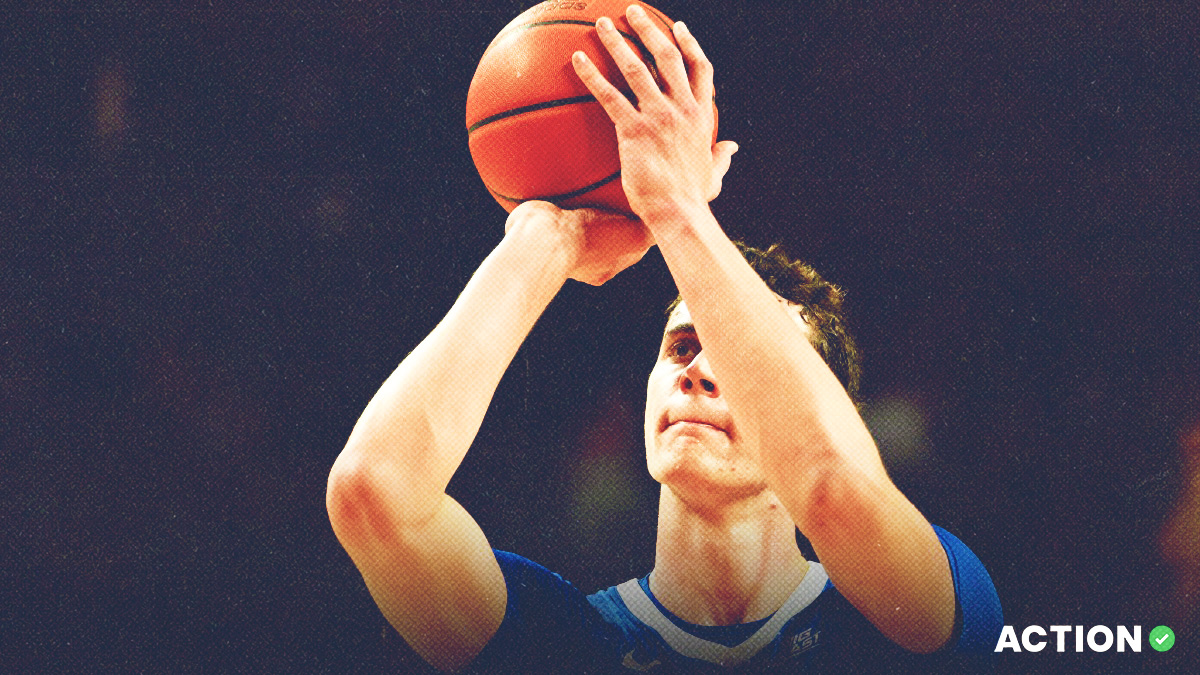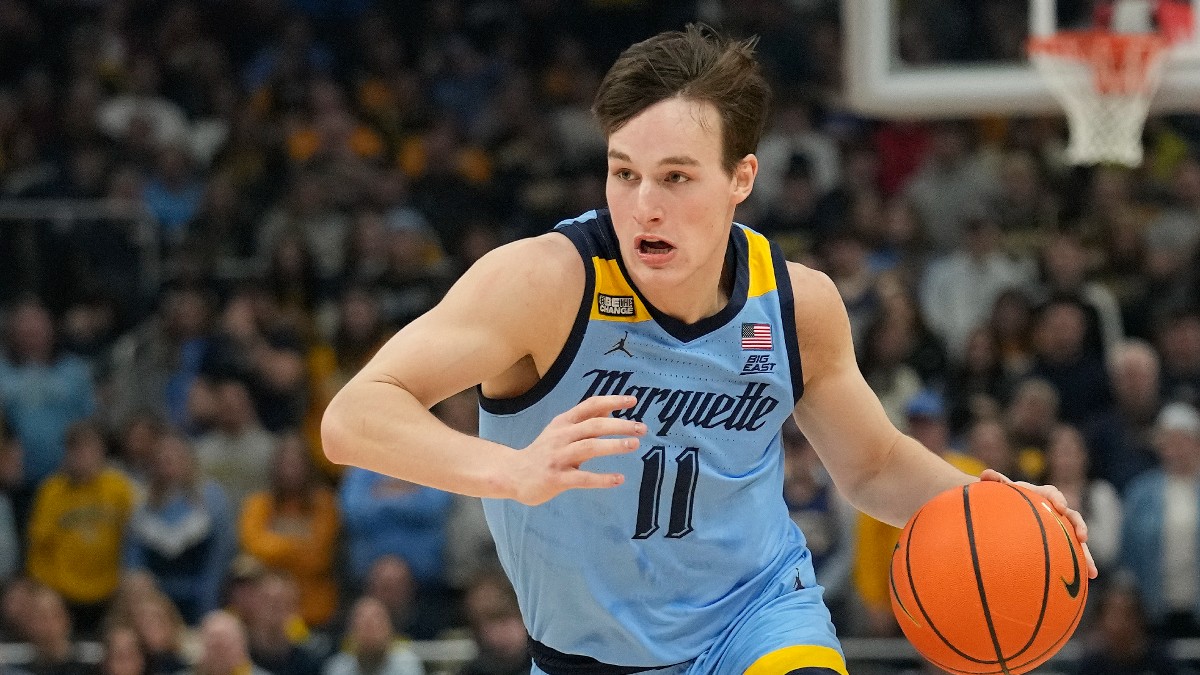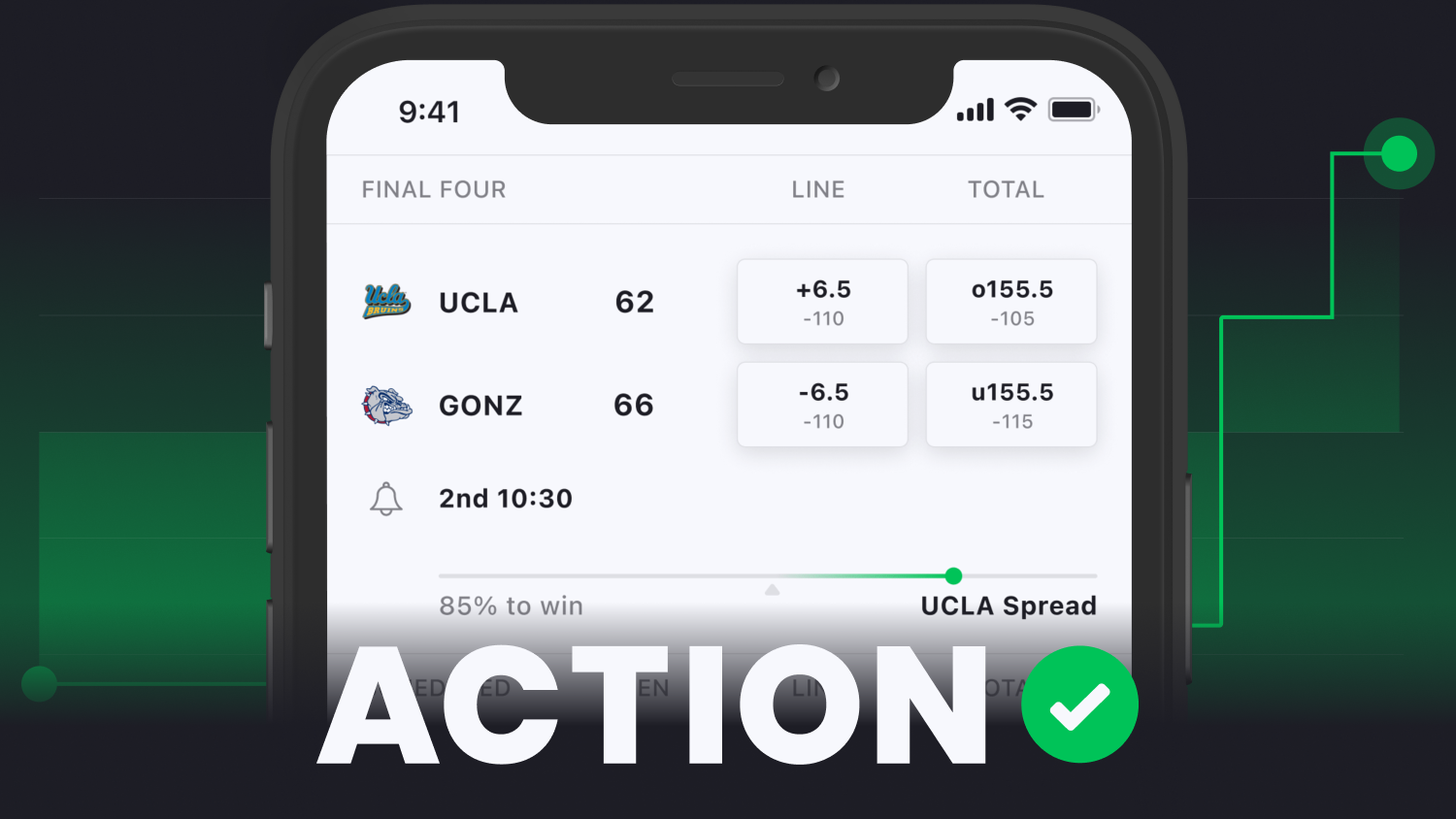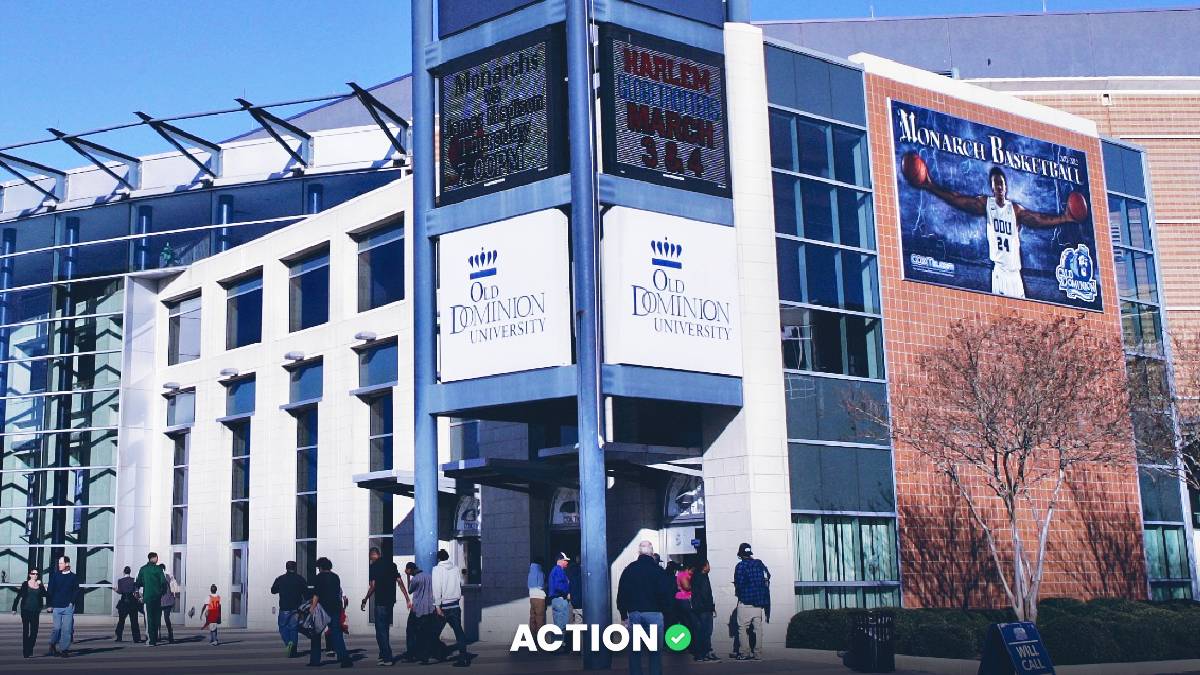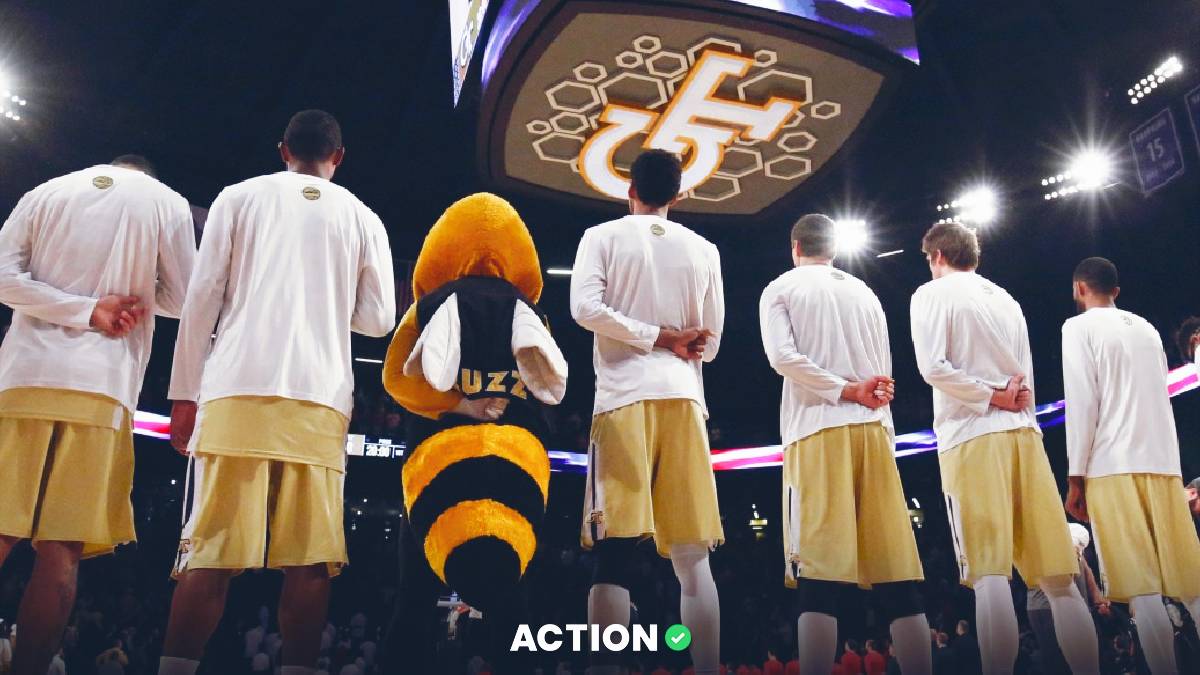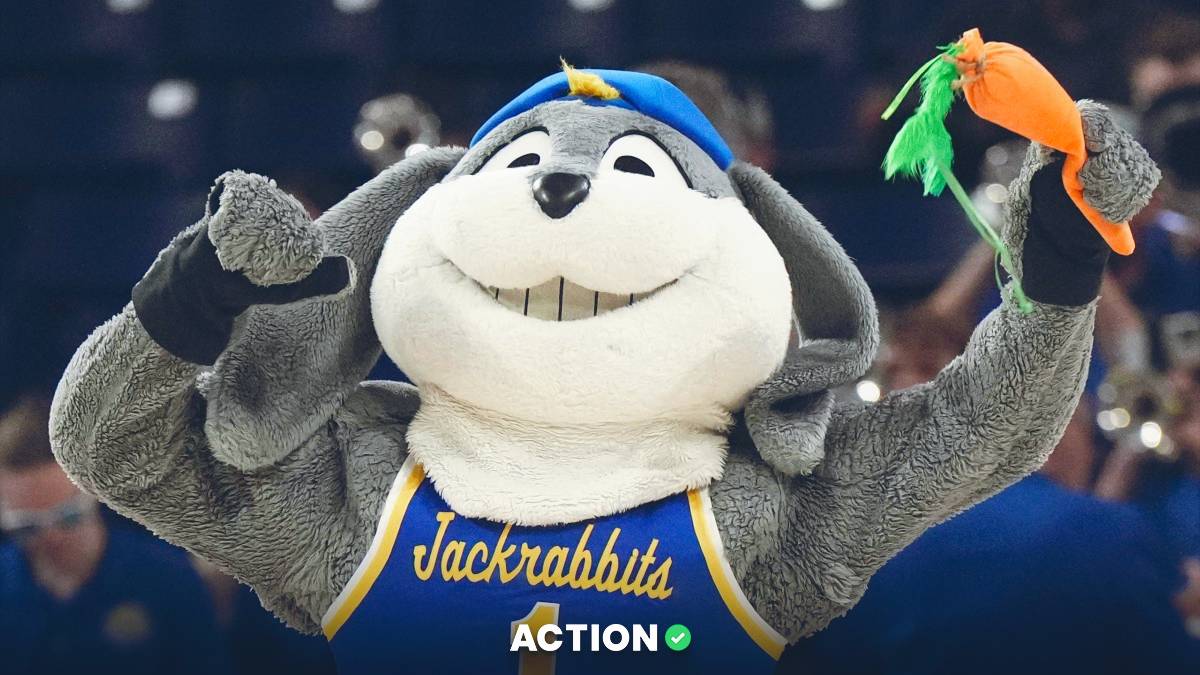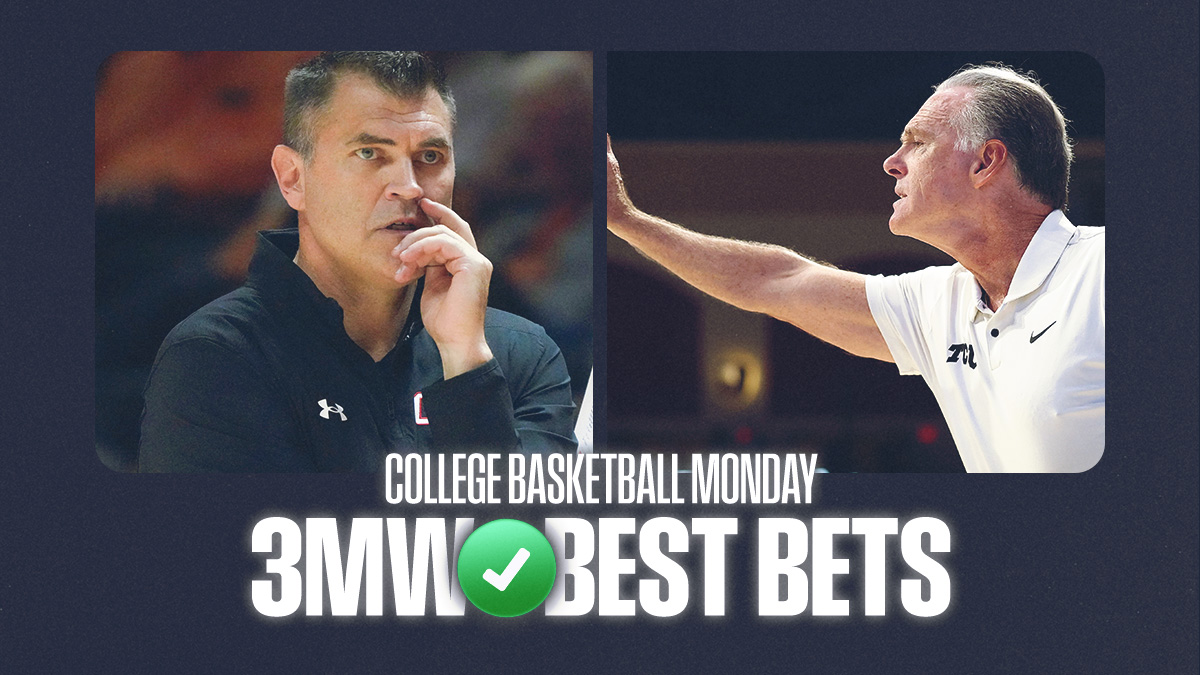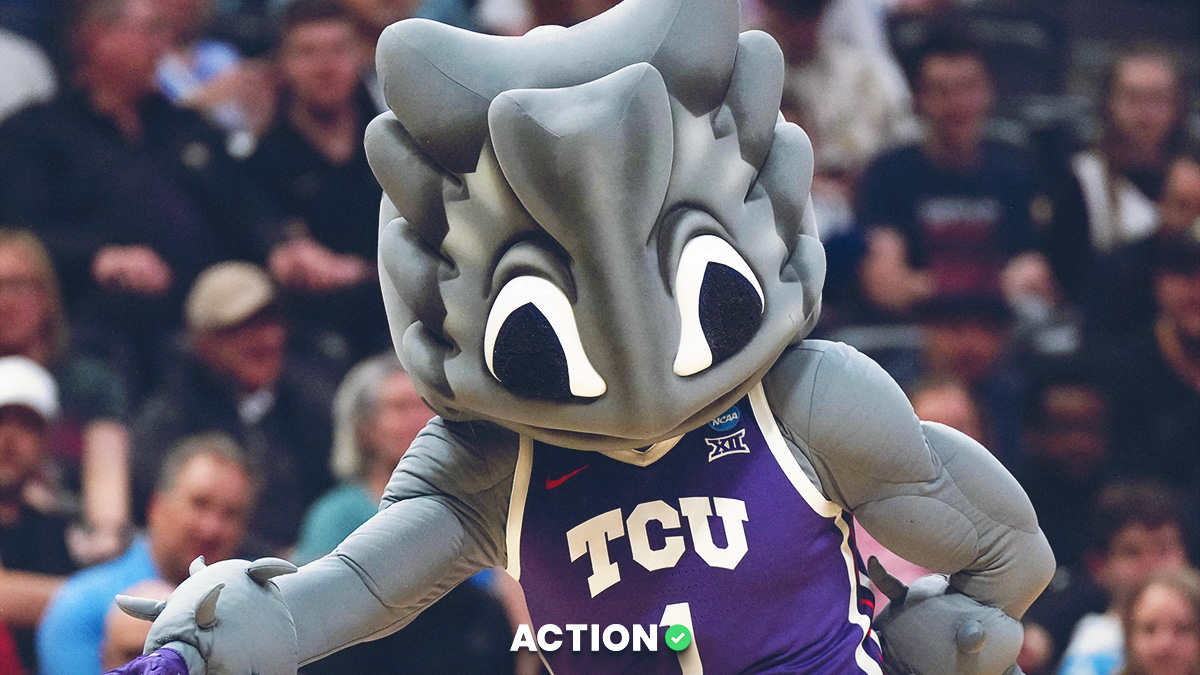Game previews are the crux of what we do at The Action Network. Breaking down individual games and slates from a betting perspective is what our readership values most.
But I’ve been trying to get away from that a bit. We have too many talented writers and analysts to keep ourselves locked into this game-by-game, day-by-day box.
One of my favorite things to do when handicapping is film and scheme analysis — deep diving into how teams play, why they play that way and what that means for us as bettors.
So, I’m trying to communicate that process more to our readership, starting with this film breakdown of Creighton.
The Bluejays play a particular brand of basketball, and it’s a style I adore. Greg McDermott has crafted this team into one of the most efficient two-way modern college hoops squads.
Let’s discuss why and how it all starts with Ryan Kalkbrenner.
Kalkbrenner NPOY Case
Kalkbrenner isn’t among the nation’s elite stat-sheet stuffers. He averages about 16 points and seven rebounds per game, and he doesn't dish out too many assists.
He’s not rated absurdly high by the nerds – EvanMiya (no offense, Evan) has him as the nation’s 17th-most valuable player by Bayesian Performance Rating.
But based on schematics alone, I’m not sure there’s a more valuable player to his team than Kalkbrenner.
For example, the game against Alabama. With about 13 minutes left in the first half, the Jays led 14-10 when Kalkbrenner went down with a turned ankle. He wouldn’t return until the start of the second half, and the Tide poured in 30 points in 12 minutes by letting Nick Pringle attack the unprotected basket.
But Kalkbrenner returned for the second half and dropped 17 points in 20 minutes, including six of Creighton’s eight out of the half. He finished as a +6 in a three-point win, proving to be the difference maker in the game.
I mean, check out his on-off splits. Creighton’s offense takes a hit with him on the floor, but the Bluejays’ defense is about 12 points per 100 possessions better with him on the floor.

That gets us into the thick of our article: analyzing the infamous KalkDrop.
The KalkDrop
There’s been a drop coverage revolution in college basketball. More and more teams are running this defensive scheme.
Randy Bennett and Saint Mary’s are among the nation’s best at dropping. It's effortless for Matt Painter to use drop coverage with Zach Edey. Nate Oats, Charles Bediako and the Tide stopped everyone last year with the drop. The Rainbow Warriors have been running the drop on late-night ESPN+ streams for years.
But the KalkDrop is something special.
Before I get ahead of myself, let’s talk about drop coverage more generally.
It’s hard to summarize drop coverage in two sentences, but let me try.
Perimeter defenders overplay ball-handlers on the 3-point line and wing, funneling them towards a rim protector who sags towards the rim. Ultimately, it results in opposing ball-handlers that can’t pull up from 3 but also are afraid to attack the rim, so they opt for inefficient, awkward mid-range shots.
But the Xs and Os are a tad more complex.
Drop coverage is primarily a ball-screen coverage. The screener’s defender doesn’t follow the ball-handler up to the perimeter level.
Instead, it drops to a “predetermined drop level" (intentionally vague) in the mid-range or the rim, attempting to contain the ball-handler or roll-man rather than attack him – similar to how some defensive lines will play “contain” when pass-rushing against a mobile quarterback in football.

Meanwhile, the on-ball defender forces the ball-handler to use the screen – rejecting the screen is the primary way to counter drop coverage, so drop defenses can’t mess this up – and then pursues him relentlessly over the top, essentially playing catch-up.

A key advantage to drop coverage is that it defends ball screens with only two defenders. Most ball-screen defenses require a third defender — the whole point of the pick-and-roll is to try and generate a 3-on-2 or 2-on-1 — but dropping the roll-man defender means the defense is playing the screen two-on-two, sacrificing a mid-range shot but avoiding a 3-point or at-the-rim attempt.
So, you can see how opposing offenses are forced to take tough 2s. Drop coverage defenses essentially beg offenses to pull up over the drop defender.
You can see this all clearly laid out in this Jordan Sperber (Hoop Vision) post:
When you have a 7-foot-2, lengthy rim protector that blocks 2.3 shots per game, like Kalkbrenner, running drop coverage is wildly enjoyable. Let Steven Ashworth, Trey Alexander, and Baylor Scheierman chase ball-handlers around the perimeter and funnel them toward Ryan. I promise you, those guys don’t want to attack Kalk.
With all this in mind, let’s look at Creighton’s statistical profile.
The Bluejays rank second nationally in 3-point attempt rate allowed (26%). They also rank in the 96th percentile of teams in field goal attempt rate at the rim (22%).
So, naturally, they’re first nationally in Rim-and-3 Rate Allowed (67%). They also allow the most field goal attempts from the mid-range and paint areas (34.5).

Opponents are shooting 41% from mid-range against Creighton, which is actually pretty good relative to the D-I average. But at that rate, they score just .83 PPP when you get a shot up (not every possession). McDermott will take that six days a week and twice on Omaha Sundays – for context, .83 PPP would rank 328th nationally among D-I offenses.
Also, the Jays refrain from sending opponents to the charity stripe, as opposing ball-handlers never get downhill. Creighton ranks first nationally in free-throw rate allowed (13.1%).
It’s a highly efficient defensive scheme.
But without Kalkbrenner patrolling the paint, Creighton’s drop coverage ceases to exist. Fredrick King is a useless interior defender (1.15 post-up PPP allowed, 13th percentile) who fouls too often, and the Jays' depth pieces aren't particularly lengthy.
Again, look at how Pringle cooked Alabama without Kalkbrenner.
And again, with schematics in mind, it’s hard to imagine a more critical defender.
Off-Screen Offense Off Kalkbrenner
Kalkbrenner has a solid array of post moves. He’s no Edey or Kevin McHale down low, but I’d take him on the block over most collegiate big men.
Kalk scores 1.27 post-up PPP, which ranks in the 95th percentile of D-I players. He scores 12 paint points per game, which ranks in the 99th percentile. Behind his 72% 2-point shooting prowess, the Jays rank third nationally in interior field goal percentage (62%).
Essentially, he’s enough of a threat to force defenses to overplay him.
And that’s where his real value comes in.
Kalkbrenner pulls defenses toward the interior and opens up everything on the perimeter. And McDermott takes advantage.
McDermott has several elite shooters on his squad. Schierman was renowned for his shooting prowess at South Dakota State. Ashworth canned 43% of his long balls at Utah State last season. Alexander led all Big East players in 3-point shooting last year at 44%.
Creighton runs loads of perimeter off-ball screen and handoff actions to pop open these sharpshooters. Scheierman and Ashworth have canned 57 of their combined 161 3-point attempts this year, a more than respectable 36%.
The two generate a combined 1.22 PPP on off-ball screen and handoff sets, a remarkable efficiency mark.
So, combined with elite drop coverage, what does it mean when you have elite interior scorers and perimeter shooters?
It means you do the exact opposite of what your opponents do – generate highly efficient shots on offense.
Creighton ranks seventh nationally in 3-point rate (49%) and cans 38% of those attempts. The Jays rank 76th nationally in Rim-and-3 Rate (86%) and fifth in Rim-and-3 PPP (1.2).
Among D-I teams, they generate the fourth-most catch-and-shoot 3-point attempts (35% of possessions) and score the second-most PPP on those shots (1.17). They generate the 19th-most unguarded jump shots per game (12.1).
King is scoring .73 post-up PPP this season, which ranks in the 28th percentile of D-I players. If he’s in the game, the defense can gravitate towards the exterior, thus shutting off all of Creighton’s perimeter actions.
Again, considering the schematics, it’s hard to imagine a more important player than Kalkbrenner.
What Does ShotQuality Say?
ShotQuality attempts to project offensive and defensive efficiency based on the “quality” of attempts taken and allowed rather than if the shots were made or missed.
It’s a way to cut through variance, project luck and regression. It’s an imperfect science, but I think it’s among the best ways to analyze teams from a long-term perspective.
Essentially, teams that generate good looks and force bad looks should win out over the long run.
Most advanced predictive statistics sites – KenPom, BartTorvik, EvanMiya, etc. – project Marquette, Connecticut and Creighton as the Big East’s three best teams. It’s hard to argue with that – I fully expect one of those three teams to snag the regular-season crown in late February.
But only one projection site has Creighton atop the Big East, and that’s ShotQuality.
| Team | Off. Shot Quality | Def. Shot Quality | Adj. Shot Quality |
|---|---|---|---|
| Creighton | 1.24 | .95 | .29 |
| Marquette | 1.21 | .96 | .24 |
| Villanova | 1.3 | 1.06 | .24 |
| UConn | 1.25 | 1.03 | 0.22 |
| St. John's | 1.19 | 1.02 | .18 |
| Xavier | 1.14 | .99 | .15 |
| Butler | 1.15 | 1.03 | .13 |
| Providence | 1.1 | .99 | .11 |
| Seton Hall | 1.14 | 1.03 | .11 |
| DePaul | 1.17 | 1.18 | -0.1 |
| Georgetown | 1.07 | 1.08 | -0.1 |
Why is that?
You can probably guess.
Creighton generates the best looks and forces the worst looks. The Jays generate a ton of high-quality Rim-and-3 looks on offense and force an inexplicably high amount of inefficient, awkward, tough 2s on defense.
That’s the type of team I want to buy.
And it’s all thanks to Kalkbrenner, who’s almost fully responsible for the nation’s best drop-coverage defense and inside-out offense.
One-Dimensional? Think again
I need to emphasize this: Creighton is not a one-trick pony.
Yes, offensively and defensively, McDermott and the Jays’ livelihood is predicated on Kalkbrenner. But Creighton has plenty of bailout options when Plan A isn’t in the cards.
For example, Ashworth is a pick-and-roll maestro. He was an excellent portal pickup for McDermott because he was a savant dishing assists on ball screens with the Aggies – Ashworth finished 2023 with a 26% assist rate and 13% turnover rate.
This year, Ashworth is dishing 3.2 assists per game on significantly lower usage. But he’s still scoring .89 pick-and-roll ball-handler PPP (69th percentile) and, when paired with roll-man savant Kalkbrenner, leads a Creighton offense that’s fourth nationally in pick-and-roll PPP (1.11).
Imagine trying to defend this action:
McDermott can signal an Ashworth pick-and-roll if the inside-out offense isn’t there, and the Jays can still score.
Another example: Scheierman is becoming a one-man superstar in Omaha. He was always viewed as an off-ball sharpshooter with the Jackrabbits, but he’s becoming the type of player that can carry an offense in crunch time.
Look at what he did in Kalkbrenner’s absence against Alabama. He kept the Jays in the game by being an on-ball, shot-creating presence.
Scheierman boasts the team’s highest BPR (7.4) and OBPR (5.1) while ranking just behind Kalkbrenner in DBPR (2.3). He’s scoring 1.3 PPP as a ball-screen initiator (97th percentile) and has been among the team’s best perimeter defenders (.72 spot-up PPP allowed, 75th percentile; .40 off-screen PPP allowed, 90th percentile).
He can create shots when the offense stalls, scoring six paint points per game and averaging four free-throw attempts per game. He can make plays when the offense stalls, averaging almost five assists per game. He can grab boards when Kalkbrenner is tied up, averaging almost eight rebounds per game.
Every elite team needs a crunch-time scorer — a go-to guy when everything breaks down in the Final Four.
Every team needs an on-ball defender it can rely on against the nation's best scorers. A guy who's lengthy, rangy and athletic enough to match up with anyone.
I think Scheierman is becoming that guy.
It’s also worth talking about the overall profile of the Bluejays. They rank 18th nationally in average height, 12th in D-I experience and 36th in continuity. Three starters returned from last year’s squad that made the Elite Eight.
The Jays are an experienced, seasoned, lengthy, rangy team, and everyone knows their roles and how to play together.
It’s hard not to love a team like that.
What It All Means
Creighton recently lost to UNLV and Villanova, the latter coming at home. Both are bad losses.
But Creighton also shot a combined 13-for-53 from 3 across the two contests, an uncharacteristic 25%.
Shooting variance is a part of today’s basketball. It’s a make-or-miss game, and sometimes the shots don't fall, especially if you’re a 3-point-reliant team like the Jays.
But if you generate good looks and deny good looks, you’ll get more good shooting nights than bad. ShotQuality graded both losses as analytical Creighton wins based on the “quality” of shots taken and allowed.
That’s what has me so fascinated with Creighton.
The Jays are generating crazy efficient shots and allowing incredibly low-efficient ones. And it’s not a mistake. It's baked into the scheme surrounding dominant big man Kalkbrenner and several elite sharpshooters.
It's fair to question the Jays as too 3-point reliant, as they couldn’t come up with answers when the shots weren’t falling against the Rebels and Wildcats.
But I think they’re finding those answers in Ashworth and Scheierman.
The point of this article is that I’m buying low on Creighton to win the Big East and national title after a few tough losses I view as flukey. You can’t overlook the Jays because they’re the most ruthlessly efficient two-way college basketball team, and I’m willing to bet on that in long-term markets.
Based on their schematic and statistical profile, I power rate the Bluejays as the Big East’s best team and top-five squad nationally. The KalkDrop and inside-out offense are unrelenting when they’re humming, and the Bluejays can trade tough 2s for open 3s on their way to a six-game NCAA tournament winning streak.
I could be wrong — the Bluejays have sometimes folded in perimeter coverage, and they don’t get to the charity stripe enough. They often crumble when everything isn't going to plan. And if Kalkbrenner gets hurt again for any significant length of time, any Creighton futures tickets likely turn into kindling.
But I can’t ignore what I see, and I'm looking at the perfect two-way modern college basketball squad.
I believe in the overall profile of this team when push comes to shove.
(As of writing, Creighton is a +4 underdog against Marquette on Saturday. The odds will change if they win, but even if they lose, the Jays are worth buying.)
Picks:
- National Champion – Creighton (+3000) at Caesars
- Big East Regular-Season Champion – Creighton (+400) at FanDuel
When betting Creighton, register with Action Network's Caesars Sportsbook promo code today for a sign-up offer.


